In Search of Toronto’s Most Beautiful Historic Buildings
Appreciating Toronto’s architectural legacy.
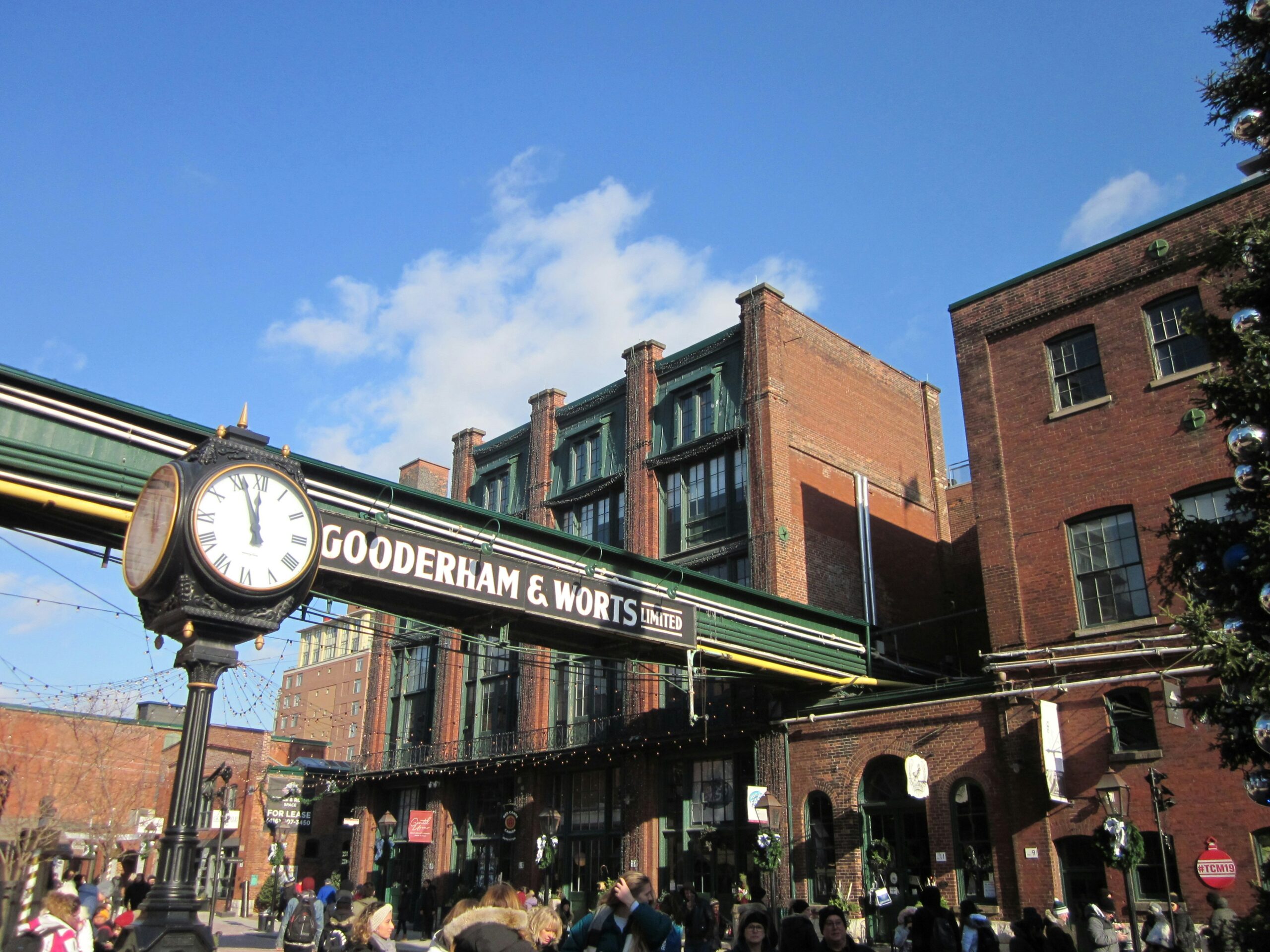
Toronto’s skyline has grown up, literally. Once a humble city with only a handful of skyscrapers, it has transformed into one of towering glass. But sitting gracefully in the shadows of these bustling behemoths are buildings that offer a nostalgic glimpse of a character-filled city.
While many of the city’s oldest buildings were inspired by designs found elsewhere in the British Empire, there were two distinctly Toronto architectural styles that are still visible today. Bay-and-gable houses, found primarily in the city’s oldest neighbourhoods, feature large bay windows usually covering more than half of the front of the home, surmounted by a gable roof. The other type is Annex homes, which were built for the city’s wealthiest residents and feature large, rounded Romanesque arches and Queen Anne-style decorative elements.
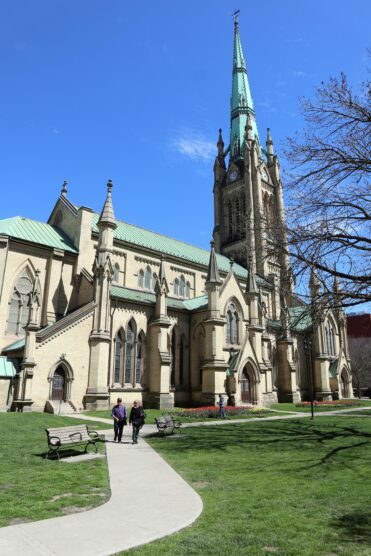
The Cathedral Church of St. James in Toronto
The oldest surviving building from the Town of York is Campbell House, built in 1822 and one of the few remaining examples of Georgian architecture in the city. In the mid-19th century, revival styles were popular. St. Lawrence Hall, built in 1850, is a beautiful Renaissance revival eye-catcher, while both St. James Cathedral (1853) and St. Michael’s Cathedral (1845-48) are Gothic revival masterpieces.
Osgoode Hall, built in stages throughout the mid-19th century, is an example of Palladian architecture, although it also has narrow and restrictive Victorian-style iron gates. It is a National Historic Site of Canada and currently home to the Law Society of Toronto.
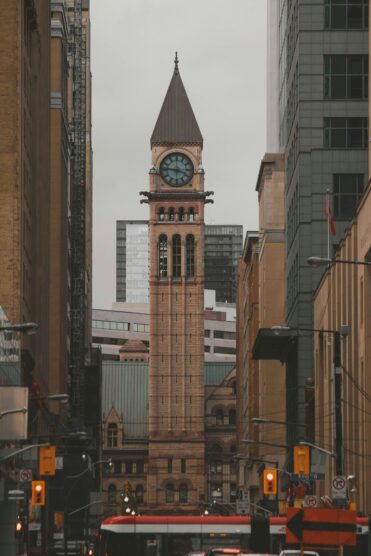
Old City Hall
Excellent examples of Richardsonian Romanesque architecture, named after the famed American architect Henry Hobson Richardson, still dot the city. They include both Victoria College, built in 1892, and Wycliffe College (1902) on the University of Toronto campus, as well as Old City Hall, built in 1889-99 and once the largest civic building in North America, and Queen’s Park (1886-92), the red sandstone gem now housing the Ontario Legislative Assembly.
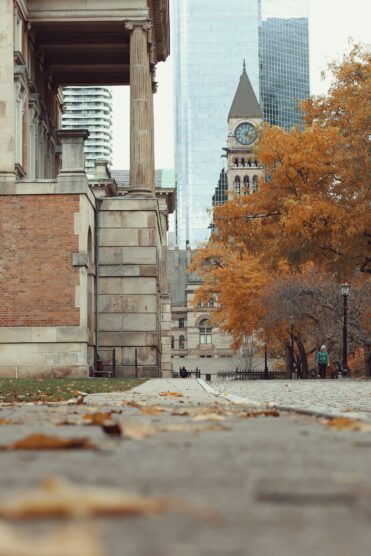
Osgoode Hall
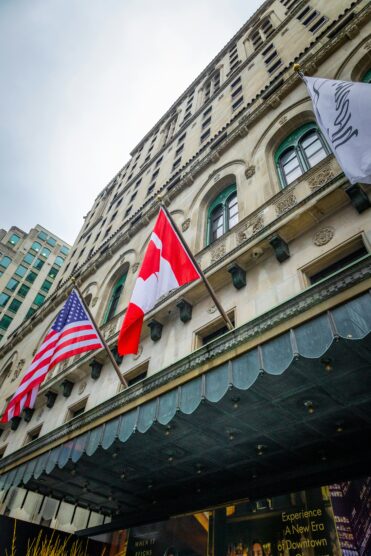
Royal York Hotel
The present-day Hockey Hall of Fame, which was built in 1885 and was originally the head office of Bank of Montreal, is not only an example of rococo architecture but also of what beautiful restorations look like. Its Great Hall, capped with a 45-foot-high stained glass dome—the largest of its kind in Canada—depicts fruit and flowers, and bears emblems representing Canadian provinces and allegorical dragons guarding gold from eagles.
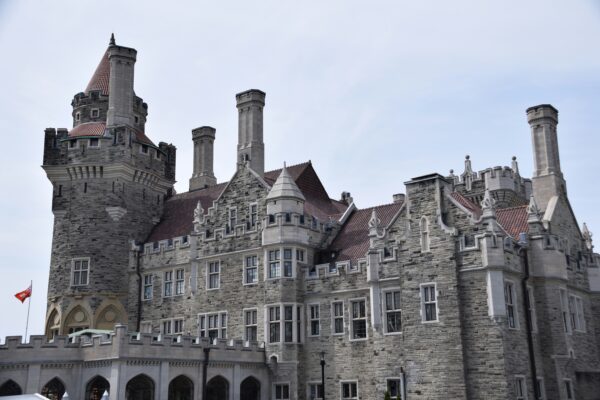
Casa Loma
In Old Toronto, the Gooderham Building, a.k.a. the Flatiron Building, combines Romanesque with French Gothic architecture and features a sandstone foundation and a copper roof. It was completed in 1892, and historians have debated whether it inspired the shape of New York’s Flatiron Building, which was completed a full decade later. The nearby Gooderham and Worts complex, now the Distillery Historic District, is one of the largest examples of Victorian industrial architecture in North America. Many of its 40 brick and stone buildings have been repurposed into eclectic restaurants, trendy cafés, and vibrant boutiques. And during the holidays, the District’s nostalgic setting gets amplified as it plays host to Toronto’s Christmas Market, attracting hundreds of thousands of visitors annually.
Moving into the 20th century, Casa Loma, once the residence of financier Sir Henry Pellatt, stands as one of North America’s true castles and Toronto’s only gothic revival castle-style mansion. Thanks to its architectural grandeur, this 1914 landmark on the hill is a popular filming location and wedding venue, and offers incredible skyline views.
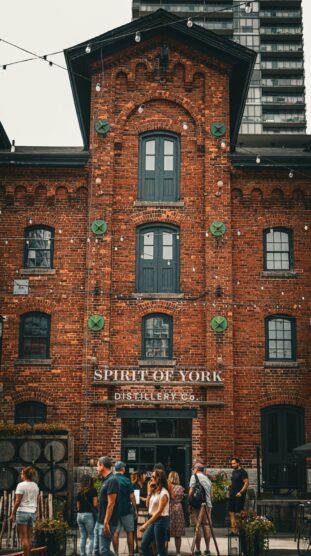
The Distillery District
Built between 1914 and 27, and another National Historic Site of Canada, Union Station is Beaux-Arts style, inspired by the École des Beaux-Arts in Paris. It’s fronted by 22 equally spaced Roman Tuscan columns made from Bedford limestone, and the interior of the Great Hall features walls made of Zumbro stone from Missouri and Tennessee marble, as well as four-storey barrel-vaulted windows on its east and west walls. It is the largest of the great urban train stations built in Canada during the early 20th century. Another of Canada’s grand railway hotels, the Fairmont Royal York, a 28-storey, châteauesque-style building completed in 1929, was once the tallest building in the British Empire.




